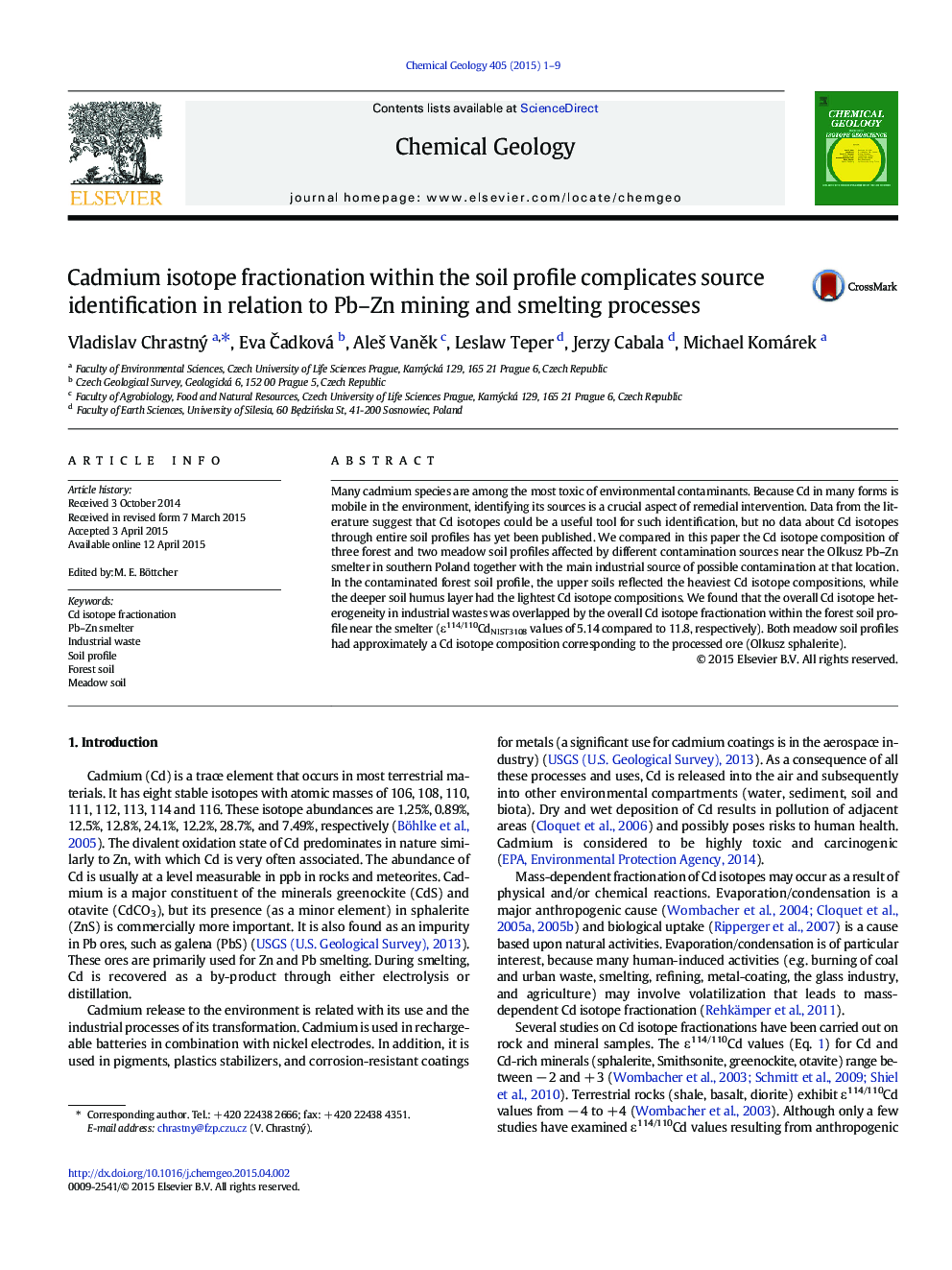| Article ID | Journal | Published Year | Pages | File Type |
|---|---|---|---|---|
| 4698531 | Chemical Geology | 2015 | 9 Pages |
•Cd in fly ash and slag from the smelter was not isotopically fractionated.•Cd isotope fractionation of near-smelter soils differed by a land use.•Cd found in topsoil near the smelter was heavier than in the deeper humus layer.•No significant fractionation was observed in soils further from the smelter.•Cd fractionated within soil profiles as a result of sorption/desorption processes
Many cadmium species are among the most toxic of environmental contaminants. Because Cd in many forms is mobile in the environment, identifying its sources is a crucial aspect of remedial intervention. Data from the literature suggest that Cd isotopes could be a useful tool for such identification, but no data about Cd isotopes through entire soil profiles has yet been published. We compared in this paper the Cd isotope composition of three forest and two meadow soil profiles affected by different contamination sources near the Olkusz Pb–Zn smelter in southern Poland together with the main industrial source of possible contamination at that location. In the contaminated forest soil profile, the upper soils reflected the heaviest Cd isotope compositions, while the deeper soil humus layer had the lightest Cd isotope compositions. We found that the overall Cd isotope heterogeneity in industrial wastes was overlapped by the overall Cd isotope fractionation within the forest soil profile near the smelter (ε114/110CdNIST3108 values of 5.14 compared to 11.8, respectively). Both meadow soil profiles had approximately a Cd isotope composition corresponding to the processed ore (Olkusz sphalerite).
